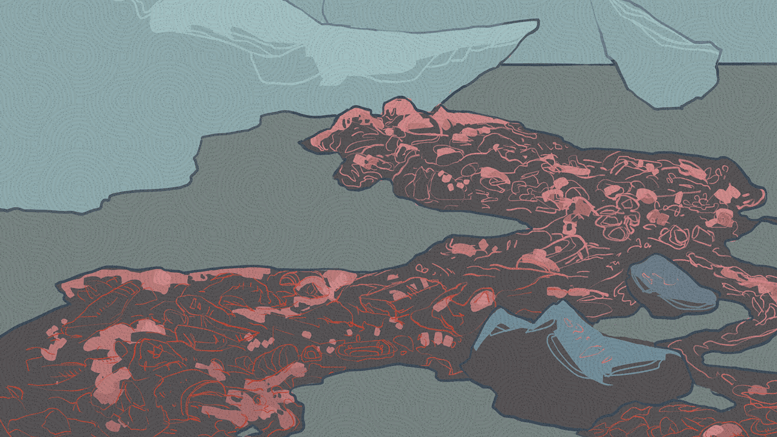The world’s first ocean-cleaning system to collect plastic pollution is expected to launch in 2016.
The system was conceptualized by 21-year-old Boyan Slat, Dutch inventor and CEO of The Ocean Cleanup, a nonprofit organization devoted to removing man-made waste from the earth’s oceans.
This system, which was announced at the Seoul Digital Forum in South Korea, has been named the Ocean Cleanup Array.
The system has a relatively simple structure. It will be composed of a set of floating barriers bound to the seabed and set in a “V” shape. The first barrier will be about 100 metres long, but the organization hopes to have a barrier that is 100 kilometres long in the north Pacific Ocean by 2020.
The natural current will push trash into the barriers, which will have screens below sea level to help separate plastic from sea life that may also be swept into the barriers. The system’s shape will funnel plastic into its centre, where the plastic will be collected, stored, and reused.
Cleaning up the plastic pollution in the world’s oceans is a difficult process, due to both the sheer amount of pollution and the rapid pace of plastic production. A study published in 2014 found that out of hundreds of samples taken from bodies of water across the globe, 88 per cent of them contained plastic debris.
While there is approximately 40,000 tons of plastic waste accounted for in the open ocean, this number is low compared to the huge amount of plastic discarded by humans, leading some scientists to fear that marine life is eating our plastic waste, which can result in starvation. Plastic waste accounts for at least 100,000 marine mammal deaths per year.
The disturbing effect of plastic on underwater life goes even further, as plastic can block out the sun, which is vital to the survival of plankton and algae.
While The Ocean Cleanup is planning to only release a barrier into the North Sea, just off the coast of the Netherlands, the team plans to tackle a bigger opponent before 2020: the Great Pacific Garbage Patch, a collection of ocean trash which has accumulated in the Pacific Ocean.
Also called the Pacific trash vortex, it spans waters from North America to Japan, and is made mainly out of microplastics. Plastic is not biodegradable, so microplastics are usually the result of plastic broken down into small pieces through continuous erosion and are not always visible to the naked eye.
The Ocean Cleanup Array is focused on passive, unobtrusive debris collection. It creates most of its movements by taking advantage of the ocean’s natural currents and avoids disturbing anything caught in the current by using filters that currents can pass under, taking any buoyant sea life with it.
The organization is also setting some lofty goals, stating that if the preliminary barriers prove successful, a larger barrier could filter away 42 per cent of the Great Pacific Garbage Patch over 10 years. The barrier being released this year will be monitored using sensors and cameras.
“It will be the first time our barrier design will be put to the test in open waters”, The Ocean Cleanup said in a press release.
“The main objective of the North Sea test is to monitor the effects of real-life sea conditions, with a focus on waves and currents.”
Slat, who dropped out of studying aerospace engineering to start The Ocean Cleanup, still believes that the answer to our growing waste dilemma lies in prevention. “Although a cleanup will have a profound effect, it is just part of the solution,” Slat said in an interview with the Inertia.
“We also need to close the tap to prevent any more plastic from reaching the oceans in the first place.”
The Ocean Cleanup Array is planned for release in the second quarter of 2016.




